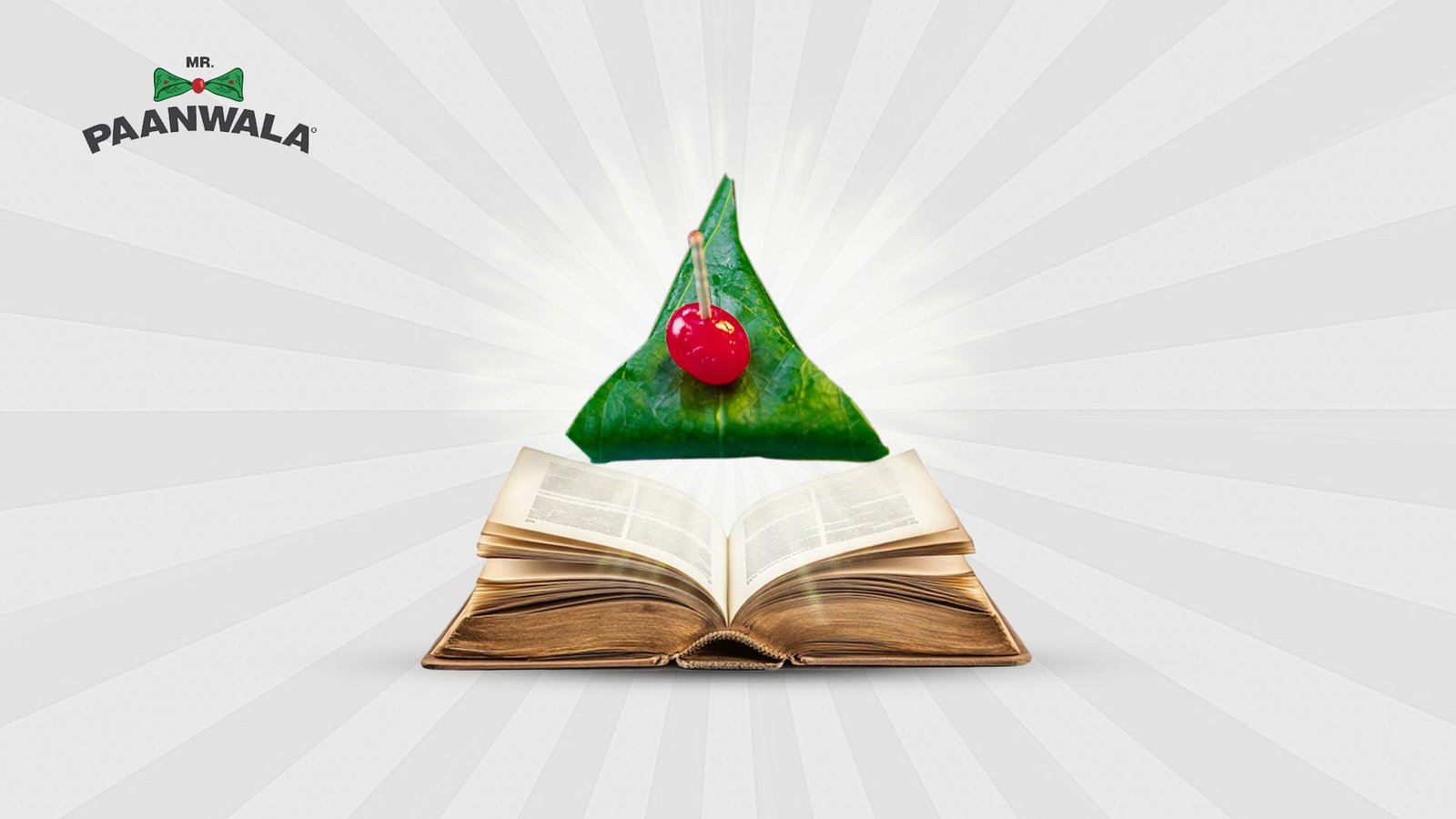
For centuries, paan has been more than just a flavorful indulgence—it has woven itself into the fabric of folklore, literature, and artistic expression. Across myths, poetry, and traditions, the betel leaf symbolizes love, hospitality, and cultural pride. From royal courts to modern adaptations, its presence continues to be celebrated.
Ancient Texts and Mythology: The Sacred Leaf
The significance of paan in ancient literature and mythology reflects its deep-rooted cultural value.
- Epics and Sanskrit Poetry: Mentions of paan appear in the Ramayana and Mahabharata, often associated with nobility and ceremonial traditions. Sanskrit poets, including Kalidasa, frequently used the imagery of paan-stained lips as a symbol of romance and desire.
- Hindu Traditions: Betel leaves are considered auspicious and have been linked to Lord Shiva, making them a revered offering in religious ceremonies.
- Mughal Influence: In Persian and Urdu literature, paan was often associated with beauty and sensuality. Classical poets like Mirza Ghalib incorporated references to paan, highlighting its elegance in royal courts.
- Classical Texts: The Kamasutra and other ancient works documented paan as a luxurious delicacy enjoyed by the elite.
Paan in Folk Songs and Cultural Traditions
The presence of paan in oral traditions and folk songs across regions showcases its role in daily life and social customs.
- Courtship and Romance: Bhojpuri and Awadhi folk songs often use paan as a playful symbol of love and attraction, narrating stories of lovers offering betel leaves as a token of affection.
- Mystic Symbolism: Bengali Baul songs sometimes depict paan as a metaphor for the fleeting pleasures of the material world, contrasting it with spiritual enlightenment.
- Wedding Rituals: In many Indian communities, paan holds a vital role in wedding traditions, symbolizing goodwill and harmony between families. In the USA, paan is often incorporated into wedding ceremonies and paired with Indian wedding decor ideas to add an authentic cultural touch to the celebrations.
Colonial Perceptions and Cultural Identity
During the colonial era, foreign travelers and writers documented their observations of paan consumption in India.
- European accounts described paan as an intriguing cultural practice, with some admiring its refreshing aroma while others criticized the red-stained streets left by betel chewers.
- Despite external influences, paan remained a symbol of Indian heritage, deeply embedded in traditions and daily life.
- During India’s independence movement, chewing paan became an act of cultural pride, reinforcing traditional practices in the face of Westernization.
Superstitions and Beliefs Around Paan
Paan is not only a culinary delight but also carries various symbolic meanings and superstitions.
- Offering paan to guests is believed to bring prosperity and strengthen relationships.
- Some customs caution against handing paan leaves directly to another person, as it is thought to create misunderstandings.
- In Indian weddings, the exchange of paan symbolizes acceptance and trust between families—a cherished tradition often highlighted with Indian wedding decor ideas across the USA to celebrate culture and unity beautifully.
Art, Theater, and Modern Culture
The betel leaf has inspired artistic depictions and continues to hold cultural relevance in contemporary times.
- Miniature Paintings: Mughal and Rajput paintings frequently depict women enjoying paan, symbolizing leisure and luxury.
- Traditional Theater: In South Indian performances like Kathakali, actors use paan to enhance facial expressions, making their movements more dramatic.
- Bollywood Influence: Paan remains an iconic symbol in Indian cinema, with songs like Khaike Paan Banaraswala (Don) and Paan Khaye Saiyan Hamaro (Teesri Kasam) celebrating its charm.
- Contemporary Adaptations: With gourmet fusion desserts and innovative paan flavors, this age-old tradition continues to evolve while maintaining its historical essence.
Honoring Tradition with Mr. Paanwala
Mr. Paanwala keeps the rich heritage of paan alive through expertly crafted blends that pay tribute to its deep-rooted history. Mehul Patel’s dedication ensures that every paan reflects the essence of tradition while embracing new flavors. Each handcrafted creation offers a taste of cultural legacy, blending time-honored recipes with innovative twists for a truly memorable experience.
